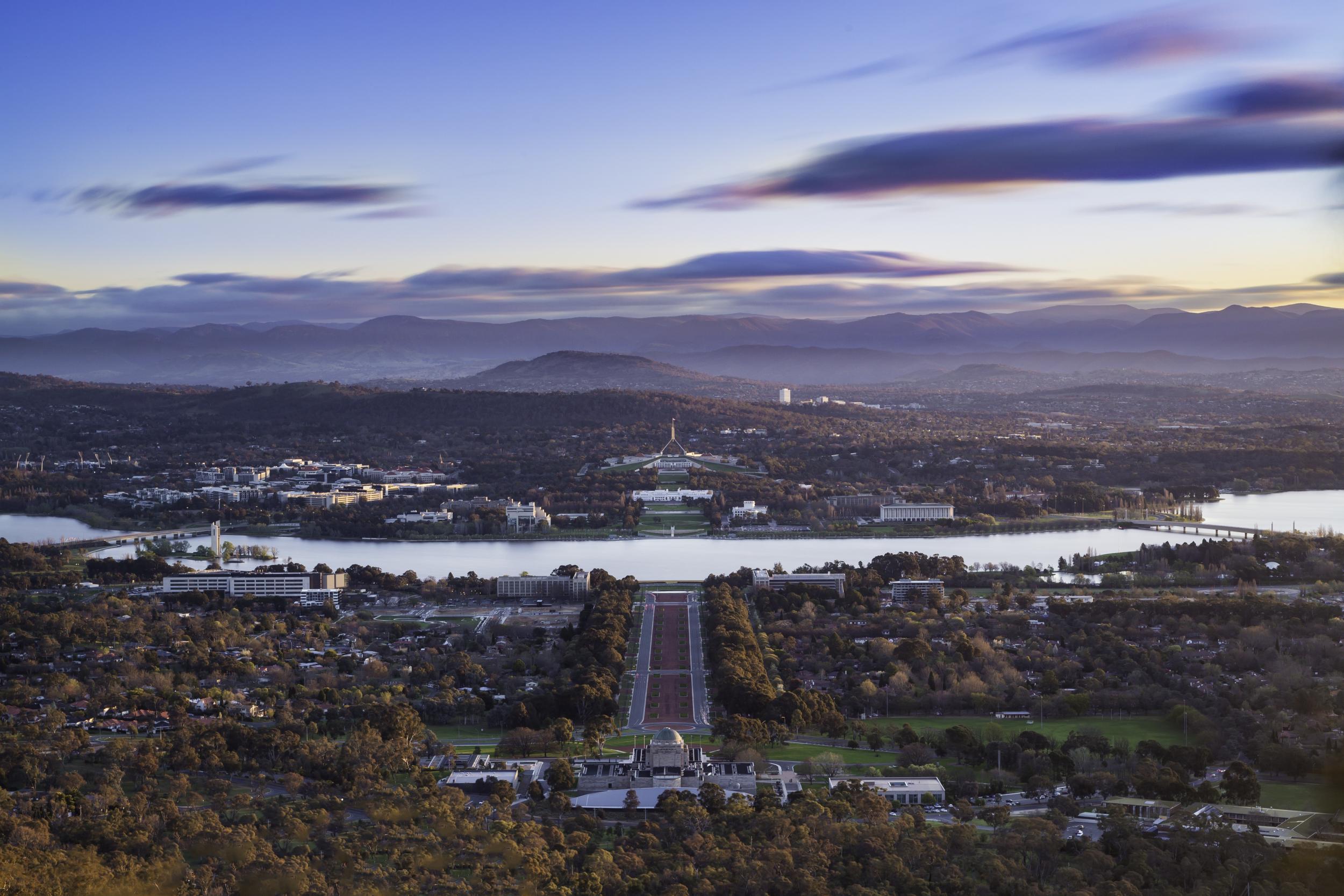The Australian regions outperforming the capitals for energy efficient housing
An unlikely Australian region is leading the energy efficiency charge for residential construction, while one major capital lags behind
New Australian homes are far more energy efficient than those built previously, a new report from CoreLogic has shown. The report, Amped Up: How energy efficient are Australian
Homes?’ has taken data from CoreLogic and checked it against metrics generated by the CSIRO’s RapidRate™ product to reveal that houses built after 2010 achieved a media star rating of 5.9 out of a possible 10. This compares with a median rating of 2.8 stars for homes built prior to 2010.
The most energy efficient region overall was the ACT, with a median star rating of 6.1. Within the ACT, the region of Molonglo had the highest rating. Positioned halfway between Yarralumla and Stromlo Observatory, Molonglo is the newest district in the ACT and is still under development. It is the only region nationally with a star rating of 6 or above for all dwellings.
The ACT dominated the top 30 list of most energy efficient suburbs. In contrast, Sydney and Hobart were notably absent from the top 30 list, although the report noted that there was a high level of variation across both cities. Sydney and Hobart are also the oldest cities in the country, with some housing stock dating back to the early 19th century. The report noted that demand for heating was also strongest in Hobart, which also had the lowest dwelling completion to population ratio. Heritage restrictions were also identified as a factor.
At a micro level, the Sydney suburbs of Blacktown-North and Bringelly-Green Valley recorded the highest ratings for NSW, with a median of 5.2 stars. In Victoria, the Surf Coast-Bellarine peninsula performed well, with the suburbs of Armstrong Creek, Curlewis and Mount Duneed all showing a median rating of 6 stars or higher.
Given Australian housing accounts for 24 percent of electricity use and 10 percent of carbon emissions, CoreLogic’s Head of Banking & Finance Solutions Tom Coad said it was vital that standards set in the National Construction Code were adhered to.
“The significant difference in energy efficiency between relatively modern homes and older homes can largely be attributed to changes in the National Construction Code
which has progressively placed more emphasis on energy efficiency requirements for newly built homes,” Mr Coad said.
“The Coalition’s recent push to pause the National Construction Code for 10 years flies in the face of Australia’s commitments to reduce carbon emissions.”
“Policymakers should be incentivising the construction of energy efficient buildings, not slamming the breaks.”
The report was compiled using the Nationwide House Energy Rating Scheme (NatHERS) star rating system. Research director at CoreLogic, Tim Lawless, said it was important to continue to monitor the energy efficiency of housing construction.
“What gets measured gets done,” he said. “As standards for energy efficient design and construction rise, it’s also becoming more important to measure energy resilience in
our housing stock.
“Minimum energy efficiency standards for new builds will continue to be important in supporting Australia’s greenhouse gas reduction targets, but there is likely to be
increasing focus and incentives on established housing where most of Australia’s housing stock was built prior to recent minimum standards.”
Records keep falling in 2025 as harbourfront, beachfront and blue-chip estates crowd the top of the market.
A divide has opened in the tech job market between those with artificial-intelligence skills and everyone else.
The 2026 McGrath Report warns that without urgent reforms to planning, infrastructure and construction, housing affordability will continue to slip beyond reach for most Australians.
Australia’s housing market has reached a critical juncture, with home ownership and rental affordability deteriorating to their worst levels in decades, according to the McGrath Report 2026.
The annual analysis from real estate entrepreneur John McGrath paints a sobering picture of a nation where even the “lucky country” has run out of luck — or at least, out of homes.
New borrowers are now spending half their household income servicing loans, while renters are devoting one-third of their earnings to rent.
The time needed to save a 20 per cent deposit has stretched beyond ten years, and the home price-to-income ratio has climbed to eight times. “These aren’t just statistics,” McGrath writes. “They represent real people and real pain.”
McGrath argues that the root cause of Australia’s housing crisis is not a shortage of land, but a shortage of accessibility and deliverable stock.
“Over half our population has squeezed into just three cities, creating price pressure and rising density in Sydney, Melbourne and Brisbane while vast developable land sits disconnected from essential infrastructure,” he says.
The report identifies three faltering pillars — supply, affordability and construction viability — as the drivers of instability in the current market.
Developers across the country, McGrath notes, are “unable to make the numbers work” due to labour shortages and soaring construction costs.
In many trades, shortages have doubled or tripled, and build costs have surged by more than 30 per cent, stalling thousands of projects.
Need for systemic reform
McGrath’s prescription is clear: the only real solution lies in increasing supply through systemic reform. “We need to streamline development processes, reduce approval timeframes and provide better infrastructure to free up the options and provide more choice for everyone on where they live,” he says.
The 2026 edition of the report also points to promising trends in policy and innovation. Across several states, governments are prioritising higher-density development near transport hubs and repurposing government-owned land with existing infrastructure.
Build-to-rent models are expanding, and planning reforms are gaining traction. McGrath notes that while these steps are encouraging, they must be accelerated and supported by new construction methods if Australia is to meet demand.
One of the report’s key opportunities lies in prefabrication and modular design. “Prefabricated homes can be completed in 10–12 weeks compared to 18 months for a traditional house, saving time and money for everyone involved,” McGrath says.
The report suggests that modular and 3D-printed housing could play a significant role in addressing shortages while setting a new global benchmark for speed, cost and quality in residential construction.
Intelligent homes
In a section titled Weathering the Future: The Power of Smart Design, the report emphasises that sustainable and intelligent home design is no longer aspirational but essential.
It highlights new technologies that reduce energy use, improve thermal efficiency, and make homes more resilient to climate risks.
“There’s no reason why Australia shouldn’t be a world leader in innovative design and construction — and many reasons why we should be,” McGrath writes.
Despite the challenges, the tone of the 2026 McGrath Report is one of cautious optimism. Demand is expected to stabilise at around 175,000 households per year from 2026, and construction cost growth is finally slowing. Governments are also showing a greater willingness to reform outdated planning frameworks.
McGrath concludes that the path forward requires bold decisions and collaboration between all levels of government and industry.
“Australia has the land, demand and capability,” he says. “What we need now is the will to implement supply-focused solutions that address root causes rather than symptoms.”
“Only then,” he adds, “can we turn the dream of home ownership back into something more than a dream.”
ABC Bullion has launched a pioneering investment product that allows Australians to draw regular cashflow from their precious metal holdings.
On October 2, acclaimed chef Dan Arnold will host an exclusive evening, unveiling a Michelin-inspired menu in a rare masterclass of food, storytelling and flavour.




















